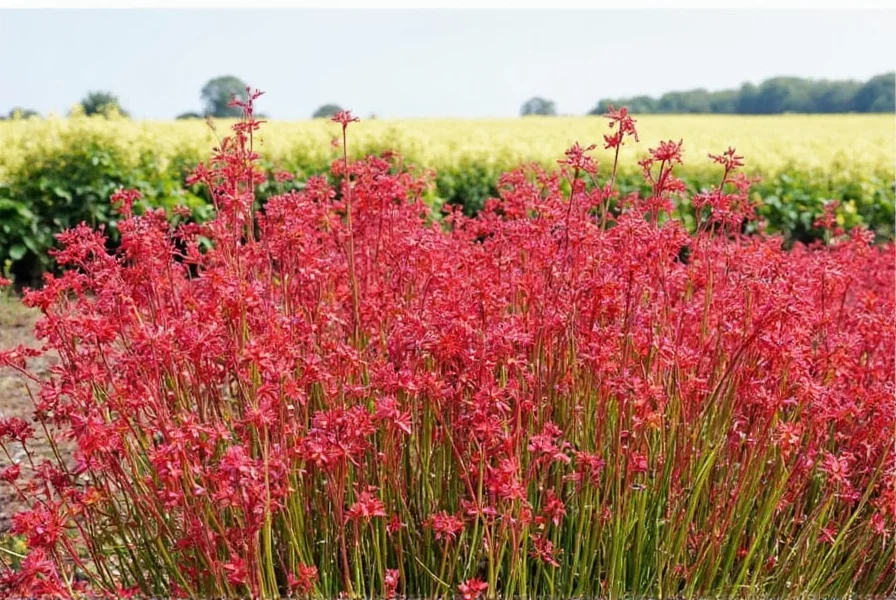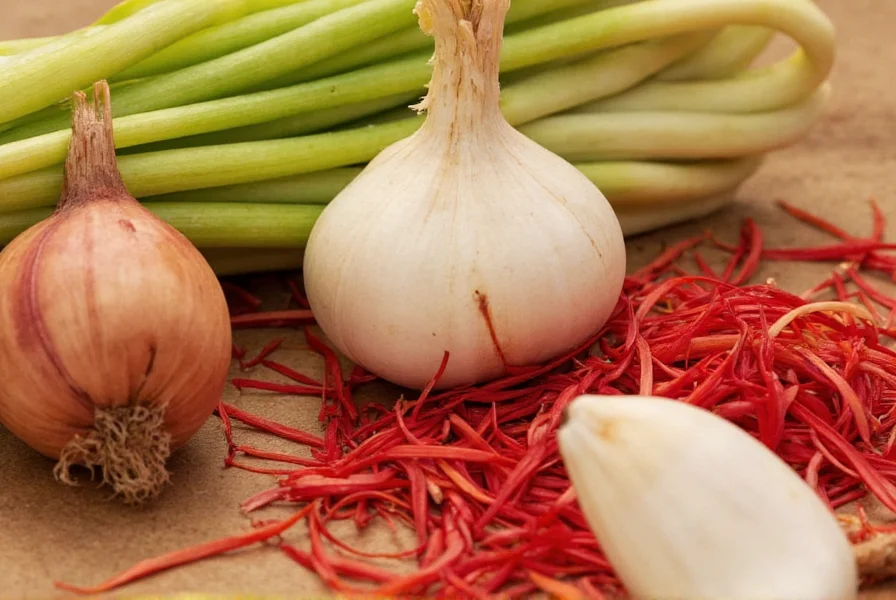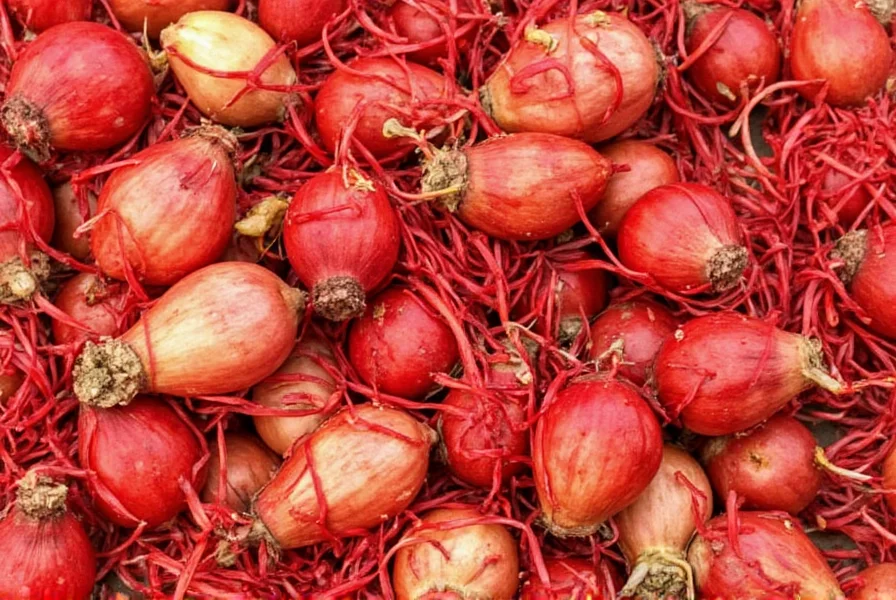Saffron, the world's most expensive spice by weight, originates from the delicate stigmas of Crocus sativus, a fall-blooming crocus species. Despite frequent references to “saffron bulbs,” this terminology is botanically incorrect and can lead to cultivation mistakes. The saffron plant grows from corms—dense, solid stem tissues—not layered bulbs. This distinction matters significantly for gardeners and farmers seeking to grow this valuable crop.
Understanding Corms vs. Bulbs: A Botanical Clarification
Many people mistakenly refer to saffron’s underground structure as a “bulb,” but this reflects a common misunderstanding of plant biology. True bulbs (like onions, garlic, or tulips) consist of layered fleshy scales surrounding a central bud. Corms, by contrast, are solid, swollen stem bases that store nutrients internally without layered scales.
| Characteristic | Corms (Saffron) | True Bulbs (Onions, Tulips) |
|---|---|---|
| Internal Structure | Solid tissue throughout | Layered fleshy scales |
| Growth Pattern | New corm forms on top of old one | New bulbs form alongside parent |
| Storage Organs | Stem tissue | Modified leaves |
| Examples | Saffron, gladiolus, crocus | Onion, garlic, tulip, lily |
The Saffron Corm: Structure and Function
The saffron corm measures approximately 2.5-5 cm in diameter and features a fibrous outer tunic. Unlike bulbs that multiply by producing offsets, saffron corms regenerate annually—the original corm shrivels as a new one develops directly above it. This growth pattern significantly impacts planting depth and spacing requirements.
Each saffron corm produces one to four delicate purple flowers in autumn, each containing three vivid red stigmas that become the prized saffron threads after careful harvesting and drying. The corm’s health directly influences flower production and saffron yield, making proper corm selection and care essential.

Why the Corm/Bulb Distinction Matters for Cultivation
Misidentifying saffron’s growth structure as a bulb leads to common cultivation errors. Gardeners expecting bulb-like behavior may plant corms too shallowly or too deeply, space them incorrectly, or misunderstand their dormancy requirements.
Proper saffron corm planting requires:
- Planting depth of 10-15 cm (4-6 inches)
- Spacing of 10-15 cm between corms
- Well-drained soil to prevent rot (corms are more susceptible than many bulbs)
- Summer dormancy period with minimal watering
- Fall planting for autumn bloom
Unlike many bulb plants that multiply rapidly, saffron corms produce limited offsets, typically yielding 1-3 new corms per planting. This slow propagation rate contributes significantly to saffron’s high market value, as it takes approximately 150 flowers (and thus 50 corms) to produce just 1 gram of dried saffron.
Common Misconceptions in Saffron Terminology
The “saffron bulb” misnomer persists due to several factors:
- Marketing language simplifying botanical terms for consumers
- General public unfamiliarity with corm structures
- Some retailers using “bulb” as a catch-all term for underground plant structures
- Translation issues across languages and cultures
Even reputable gardening resources occasionally use “bulb” when referring to saffron, perpetuating the confusion. However, understanding the precise botanical structure helps growers provide appropriate care and set realistic expectations for yield and propagation.
Practical Implications for Home Gardeners
For those interested in growing saffron at home, recognizing the corm structure informs critical decisions:
Selection: Choose firm, heavy corms without mold or soft spots. Larger corms (greater than 3 cm diameter) typically produce more flowers.
Storage: Store corms in a cool, dry place with good air circulation during summer dormancy—unlike many bulbs, saffron corms shouldn't be refrigerated.
Planting Timing: Plant in late summer for autumn bloom. Unlike spring-blooming bulbs, saffron follows a reverse seasonal pattern.
Harvest Expectations: Understand that each corm produces limited flowers—typically 1-4 per corm—and that harvesting the stigmas by hand is labor-intensive.

Conclusion: Appreciating Saffron's Unique Biology
The distinction between corms and bulbs isn't merely academic—it directly impacts saffron cultivation success. By understanding that saffron grows from corms rather than bulbs, growers can provide appropriate care, set realistic yield expectations, and appreciate why this spice commands such high value. This botanical precision ultimately leads to better harvests and a deeper understanding of one of the world's most ancient and valuable crops.
Frequently Asked Questions
Can I grow saffron from regular flower bulbs?
No, saffron specifically comes from Crocus sativus corms. Regular flower bulbs like tulips or daffodils produce different crocus species that don't yield the valuable saffron stigmas. Only Crocus sativus contains the distinctive red stigmas used as saffron spice.
How long does it take for saffron corms to produce harvestable flowers?
Saffron corms typically produce flowers in their first autumn after planting. However, maximum yield usually occurs in the second or third year as the corms multiply. Each corm generally produces 1-4 flowers in its first season, with potential for increased production as the corm cluster develops.
Why do some sellers call saffron corms 'bulbs'?
Many sellers use 'bulb' as a simplified term that consumers recognize, even though it's botanically inaccurate. This marketing language helps non-gardeners understand they're purchasing an underground planting structure. However, this terminology can lead to cultivation mistakes when growers apply bulb-specific planting techniques to corms.
How many saffron corms do I need to grow a meaningful harvest?
For culinary use, most home growers start with 50-100 corms. This typically yields 0.5-1 gram of dried saffron—enough for several dishes. Remember that it takes approximately 150 flowers (from 50 corms) to produce just 1 gram of dried saffron, highlighting why commercial production requires thousands of corms for significant harvests.











 浙公网安备
33010002000092号
浙公网安备
33010002000092号 浙B2-20120091-4
浙B2-20120091-4